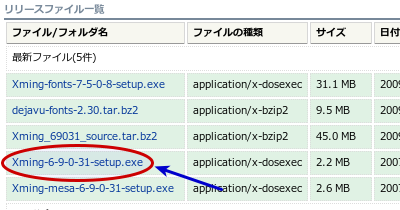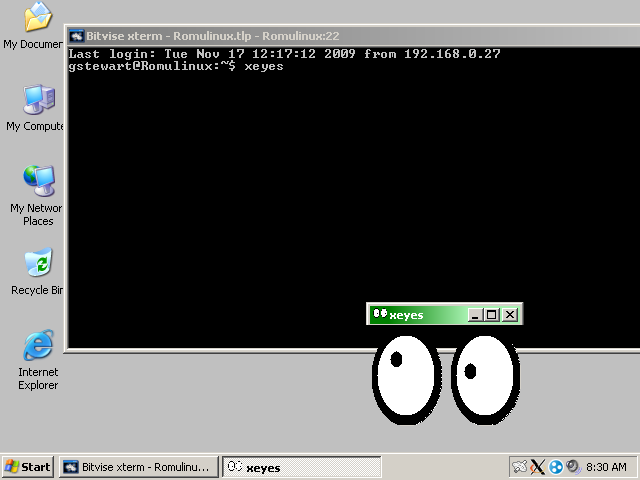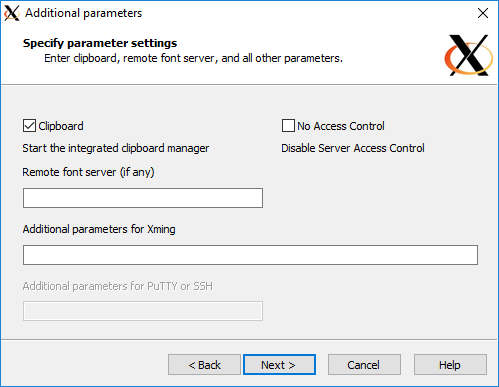
Xming is easy to use and provides an excellent X server for folks who have to run Windows. Once you click Finish, you should see whatever X login manager is running on the system you’re connecting to.

You probably won’t need to give Xming any additional parameters, but if you need to specify a remote font server, this is the dialog to do it in.įinally, you can save the configuration if you want and reuse it later. The next dialog allows you to specify additional parameters. On the next dialog, you can choose to connect to a specific host, or you can tell Xming to search for XDMCP servers. Again, click the XLaunch icon, and this time select “One Window” or “Fullscreen.” Next, select “Open session via XDMCP” on the Session type dialog.
Xming client windows#
You can also use Xming to turn your Windows machine into a X terminal, more or less. Other than having the standard Microsoft Windows title bar and such, these apps look just as they would on Linux. I’ve used Xming with stock X applications (like xcalc) and GNOME and KDE apps (like Epiphany, Konqueror, Gnome-terminal, and others) and had no problems running the applications. I like having an xterm or other terminal program, though, so I can start as many apps as I like. It’s slightly counterintuitive, because the name of the program appears in a drop-down box and looks like you’d select something from a list rather than type in a free-form name, but you can enter your own program here. In the Start program dialog, just enter the name of the program you want to run in place of xterm.

You can also run something other than an xterm when connecting to the remote system. You can then either work in the xterm or start an X application in the xterm that will be displayed on the local system using Xming.
Xming client password#
If you don’t enter your password here, you’ll be prompted for it when Xming connects to the remote system.Īssuming all goes well, you’ll get an xterm from the remote system. In the next dialog, click “Run Remote” and click the radio button next to “Using PuTTY” and fill out the user and host information. For this type of connection, choose “Start a program,” and click Next. On the next window, choose the session type. If you forget, you’ll get an error when trying to start up a subsequent session. Leave this as 0 if this is the first connection that you’re making, or set to 1 (or 2, or 3, etc.) if you’re making multiple X connections. If you’re going with the multiple programs scenario, choose “Multiple Windows.” You can also set the display number at the bottom of the dialog. On the other hand, you might choose to connect to a machine using the X Display Manager Control Protocol (XDMCP) and display an entire desktop on your Windows machine. What’s with all the options? Depending on what you plan to do, you may want to run several windows on your Windows desktop in order to display several different programs. Double-click it and you’ll see a dialog that lets you choose whether Xming displays programs in multiple windows, a single window, fullscreen, or in a single window without a title bar. The Xming installation procedure creates a desktop shortcut called XLaunch. After you’ve installed these packages, you’re ready to start running X on Windows. You’ll probably also want to grab the Xming-fonts installer, which installs the core X fonts. It takes a minute or so to run through the install. Grab the current Xming, or Xming-mesa, if you have an older client that might need the Mesa renderer instead of OpenGL, and run the setup wizard. You probably want to stick to the stable releases unless there’s a feature in the recent development releases that you can’t live without. Head to the Xming project page and find the releases section. It also has the advantage of more active development - Cygwin/X hasn’t been updated since 2004, according to its homepage. If all you want is an X Window Server - and not a complete Unix-type environment - Xming is a better choice than Cygwin/X.
Xming client license#
Xming is licensed under the GNU General Public License version 2 (GPLv2), and comes packaged as Windows executables with easy-to-use installers.

Xming client free#
Xming is a port of X Window System to Microsoft Windows that’s free and easy to use. If you find yourself working on Windows but wanting to use Linux apps at the same time, Xming can do the job. One of the not-so-nice things about Microsoft Windows is the complete lack of native support for displaying X applications. One of the nice things about the X Window System is its ability to display X apps running remotely on a local machine.


 0 kommentar(er)
0 kommentar(er)
